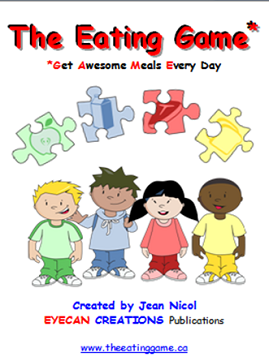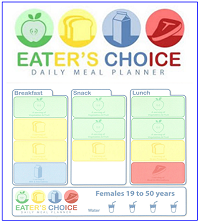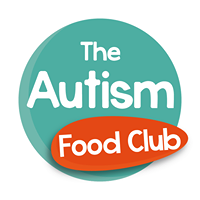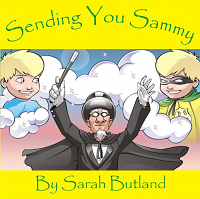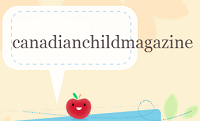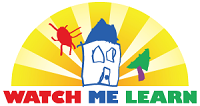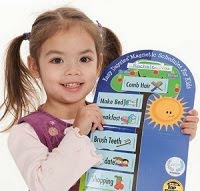The faces of autism are all different and present many different challenges in the areas of communication, cognition, social skills, social interaction, repetitive behaviors, dietary/digestive disorders and sensory processing. These challenges differ in intensity/severity in each individual diagnosed with ASD and can affect many areas of development and daily living.
At this time, although research continues and reports new findings, we do not know the causes and therefore have no cure or effective treatment/intervention for all. Parents and advocates lobby everywhere and constantly for an increase in research to find answers for this disorder that affects so many. A major challenge with this effort is to try to get advocates speaking in a united voice when some feel they are fighting very different battles and not being heard. Just the question of "cure" divides the autism community itself, never mind the vast variety of treatment offerings. The latter being a need based on the spectrum of strengths and needs as well as the severity of the autism.
There are some very good therapies and strategies that can definitely make a difference. We know that early and intensive intervention for all areas of need is crucial and very beneficial. The added challenge is always funding for what is usually a great expense.
Today we read in the news that Canadian and American studies are reporting a 30% increase from the last estimate of 1 in 88 children having autism - today the numbers are 1 in 68!
If autism is affecting 1 in 68 families soon everyone will have first hand experience of autism among family and friends. My sense is that by sheer numbers we have increased awareness but still have a long way to go with improving on understanding and acceptance. Everyone can help. If you are aware, share what you know with others. If you are not aware ask and seek out ways to learn more about this disorder that could easily affect your extended family at any time soon.
On April 2, 2014 the world will celebrate World Autism Day. Some will light it up blue, others red and some gold! Whatever color you choose or not, shine a light on autism to do your part to help many with the tremendous daily challenges they face to provide the best for those they love who are autistic.
MY CHALLENGE FOR YOU is to contribute a comment here, asking questions to increase awareness or sharing an experience/thoughts/resources that will help others learn about ASD.
Friday, March 28, 2014
A CHALLENGE FOR US ALL
Labels:
1 in 68,
2014,
acceptance,
April 2,
ASD,
autism,
awareness,
challenges,
intervention,
treatment,
understanding
Saturday, March 22, 2014
ASPERGERS
by Mari Nosal, M.Ed., CECE
As a seasoned parent of a son with Asperger’s, and please note I have a son with Asperger’s, not an Aspie son. I define him as a young man not Asperger’s. You will also note that I do not refer to Asperger’s as a disorder. I refer to it as a syndrome. A disorder alludes to something or someone who is broken and needs to be fixed. i.e. a computer virus that can be repaired. A syndrome is a challenge that one must adapt to and live with. Compensatory strategies may be taught to ensure a level of success. But Asperger’s can’t be fixed.
I have most definitely experienced a multitude of emotions in terms of parenting my son to young adulthood, and still do.. If I named every emotion I have felt, they would most likely have a length span which would originate on earth and reach as high as the furthest star in space.
To name several, I have experienced apprehension which was resultant in my fear for my son’s future. I felt pain from the inevitable ostracism he endured at the hands of peers, and adults. I have experienced sadness which originated from my sons struggles and not conforming to my perception of who he was intended to be, the person I visualized he would become, and the things I felt he should think and feel.
I have felt the uncertainty resulting from naysayer’s comments and predictions of who my son would become as a person both developmentally and behavioral. Naysayers predicted how my son would develop and what his future achievements or lack thereof. One would think professionals and society at large had psychic abilities and peered into a crystal ball to make predictions.
To parents with newly diagnosed children, I am here to emphatically implore you never to give up hope. If you give up hope, your children will certainly give up as well. You will get frustrated, feel the uncontrollable urge to bang your head on a wall, cry, and yes at times even wonder why you were blessed with a child with Asperger’s. You may even, (horrors) wish that your child would go away.
You may find yourself feeling intense pangs of jealousy when you see your child’s schoolmates walk by in a clique laughing away as they enjoy their day of play together. You may even experience intense anger and jealousy towards other parents while you silently wonder why their child was not born with challenges.
These feelings are all normal. Parents are human beings. Wishing your child would go away while you are under duress does not mean you really want him to disappear. On the contrary – it means you have invested so much love and expended so much effort into doing what is best for your child, that you merely crossed the line from loving them to the point exhaustion.
If you are the parent of a younger child, please do not surround yourselves with, nor listen to the naysayers who predict a life of doom, gloom, and anguish for your child. After all, you know your child better than anyone. You live with them 24-7. Trust your instincts. A parent knows what is best for their child. You are your child’s best advocate. Your child will take two steps backward for everyone they take forward. Adjust your expectations. Do not be hard on yourself and note merely the steps backwards. I f you adjust your expectations and look hard enough for the small steps forward you will be surprised at the growth that was not seen.
Children with Asperger’s do develop and succeed within the right environment. The anxiety stems from basing our expectations on what the Jones’s kids down the street are doing, what our friends and neighbors think of our children and us as parents. If we let go of those expectations and gauge successes on our child’s developmental and cognitive level and not other children their age, we will be pleasantly surprised.
Note your child’s achievement’s in baby steps. Do not worry about what your child will achieve ten years down the line. i.e. will they have a girlfriend, kids, get married, have friends, or simply get a decent job that will enable them to live independently. Remember that the average child with Asperger’s has a developmental age that lags 4 years behind their chronological age.
As the parent of a young adult son with Asperger’s I am hear to tell you that they have many attributes to appreciate. On a humorous note I will start with my son’s knowledge of electronics and computers. This sense of awe I now have for his computer talents were a sense of frustration when he was young. I cannot count how many computers he corrupted and how many mother boards he damaged while dismantling our computers, rebuilding them, and programming them with incompatible hardware.
As a little boy with Asperger’s, my son imitated people with foreign accents in public places. His lack of discretion would cause me to become flush from embarrassment. His knack for impersonations has come in handy when telemarketers call. My son convinces them that he is from a foreign country and doesn’t understand English. The telemarketers inadvertently hang up. I will emphasize that he has learned the fine art of discretion and outgrow public renditions of impersonations.
That young man has grown up to be a computer whiz and can now install modems, set up our new computers, and install programs safely. His talents have saved us a princely some of money for cable personnel, phone personnel, and computer repairman that did not warrant calling due to his self-taught expertise. My fondest memory was when the cable company wanted to come out and set up our new digital cable box. My son offered to do it for free. My digital system was set up in all of 12 minutes. My son was the ripe old age of twelve at the time!!!!!!!!!!!!!!!!!! Thus, what was deemed a negative and aggravating personality trait as a child has proved to be an attribute as a young adult.
As a young child my son was prone to emotional meltdowns from sensory overload. As a teenager he would provide a verbal debate for any topic or request directed towards him. If I sent him to his room for being argumentative, his debate often continued in a solitary dialogue as a soliloquy. His strong personality allowed him to walk away from children who were doing drugs, etc. Yes, a sense of nonconformity can have its merits. His debate skills turned into a talent for writing.
A humorous example from his childhood would be when we attempted to use the magic 1, 2, 3, program to teach appropriate behavior skills. Our son would act inappropriately and we would put up 1, 2, 3, fingers. When he continued to voice his opinion we sent him to his bedroom. After several weeks of implementing the behavioral program we realized that he would act up ,hence get sent to his room right before we were due to leave for church. We realized he goaded us into implementing the 1, 2, 3, program so he would not have to go to church. We quickly modified that and informed him that he would be expected to go to his room AFTER church. My son walked away and yelled, “That magic one, two, three doctor is a quack” :-0)
I am proud to say that by injecting a little humor, perseverance, venting occasionally to anyone that would listen, and most importantly adjusting our expectations to my sons needs he recently received his bachelor’s degree in psychology from college with a struggle, but much perseverance on his and our part. He successfully lived in the dorm. Again he struggled, but we were 45 minutes away if he needed us but wanted to give him a taste of independence. Independence that did not include the normal socialization of college life by neurotypical standards. But being with peers and fending for himself nonetheless. As I mentioned earlier, process and accept it in baby steps.
My son has a driver’s license. He passed after three failed attempts, but along with us he persevered and never gave up. Make no mistake our family still struggles, worries, and gets frustrated just like other parents. But as time has passed we have learned not only the art of teaching our son to accommodate us but to realize we need to accommodate him as well. I equate our quest with accepting my son. If we expect him to learn societal mores of the neurotypicals than we must attempt to make adjustments for him as well.
When in a foreign country Americans tend to expect foreigners to speak English so we can comprehend them. Shouldn’t we make the same accommodations for individuals with Asperger’s as well? They speak a different language than neurotypicals hence they can learn the world of neurotypicals but we can learn about the Aspergian lifestyle as well.
Parents, I leave you with this. If you have not pulled so much hair out of your head that you are now bald from frustration at this point I salute you. Yes, it does get better:-0)
Rock on, give your selves a pat on the back for a job well done as parents, and know there is light at the end of the tunnel.
Friday, March 21, 2014
THE WONDERS OF VIDEO MODELING
Written by Mary Beth Palo
Video Modeling is a scientifically proven method of teaching and
has been approved by the CEC (Council for Exceptional Children). Studies have
been around for many years, but video modeling seems to have just recently
surfaced into the mainstream.
I made my own video modeling about 10 years ago having no idea
of how effective it was. I made videos out of pure desperation to teach my
autistic child.
Video Modeling provides so many lessons, moments, pictures, cues
and more. These visuals simply cannot be replicated in one on one teaching to
the extent the teaching can be done in video. VM provides repetition without
needing a teacher. There are no distracters in VM - no one to attend to - no
demands being placed on you and no actions needed. VM is simply watching. Most
children with autism are visual learners; which explains the attraction and
success.
Autistic children can and do learn skills through one on one
teaching. Many times these skills acquired tend to be robotic and are not
easily generalized. A one on one setting is not real life. Proper VM can
provide more than skill generation, but also a stepping stone to generalization
along with social skill teaching. As a simple example, a video can show 2
children doing a puzzle. So, they are learning an academic skill of doing a
puzzle, while at the same time, taking turns, sharing, and social initiation
and talking if able. Another example of a video is of 2 children playing catch.
The children are learning the gross motor skills of catching and throwing,
following directions, language skills and appropriate timing of employing
language such as "throw it", "catch it", "over
here", "nice catch", etc.... You can see that the opportunities
of providing video of real life can be much more inclusive than one on one
skill teaching. And again, the repetition of a video is key!
Once skills are obtained, generalization easily occurs by
setting up a scene as shown in the movie, mimicking the scene and then
beginning to change the environment of the scene. As an example, child learns
to build a sand castle from video. Mimic the scene and build a sand castle.
Expand and begin to generalize by going to park and build castle, take a child
to play with and build castle, build castle at beach, have 3 or 4 children work
together, etc...
Children love children! Children learn through play and having
fun. This is what I have learned through the years and what I employ in my
videos. VM is super effective but can also be a lot of fun and a very diverse
teaching tool. Video can teach functional skills, play skills, social skills,
language skills and much more. Teaching skills through video and fun are the
most effective. Children do not know they are learning - they think they are
having fun watching kids play!
Thursday, March 20, 2014
A NEW VENTURE FOR EYECAN CREATIONS
Introducing
a new partnership between 4 entrepreneurs who have decided to work
together to bring top products to parents and professionals working with
children who have special needs.
We
are Jean Nicol, Karen Lynne Sadler, Mari Nosal and Mary Beth Rochin Palo.
Mary
Beth and “Watch Me Learn” bring you Video Modeling; effective video based
instruction DVDs. Struggling with therapy that was not helping her autistic son,
Mary Beth began developing videos she knew would help him. She was right and
others asked for her educational products so they could teach critical
developmental skills and social skills to children in their care. Learn more
from Mary Beth and others at http://www.watchmelearn.com/about-us
Mari Nosal is a published author who has
written many Autism publications. Through her writings she shares her knowledge
and firsthand experience with her autistic son, from toddler through teens to
adulthood beyond college graduation. Her writing offers support,
affirmation, encouragement and hope to parents and professionals. Learn more
about Mari’s publications and what readers think at http://amzn.to/1dqyYcR
Karen
Lynne Sadler has created the winning Success Box products. With her first hand
experience as an educator and therapist, she has developed organizational
storage systems for all the visual supports you use to help your child with
communication. Karen’s mission is to organize, inspire and support. Read about
how she does that http://firstandthen.com/my-story/
Jean
Nicol invented The Eating Game, a program that is changing the lives of
children who eat a limited number of foods; providing them with the tools to
have fun as they plan and eat healthy meals and snacks every day. Her
inspiration was a seven year old boy with autism. Her motivation was to do what
she could to help him reach his potential, starting with a healthy diet he
would plan himself! Learn more at http://eyecancreations.blogspot.ca/2014/03/the-eating-game-2007-2014.html
We
will all contribute to a blog that we hope will provide you, parents and
professionals with support you need. Our hope will always be to increase
awareness, understanding and acceptance of those with special needs. There will
be an emphasis on visual supports that we believe can enhance the lives of
those with needs in the areas of communication, social skill development and
behavior.
EYECAN
CREATIONS is the ideal host for us to share what we have learned and
experienced over many years working and living with those who may have
different abilities. We believe these abilities need to be recognized and
nurtured to help them reach their full potential. The hope is that what we have
to offer will assist with this achievement for those you love and care for.
Sunday, March 2, 2014
THE EATING GAME 2007 - 2014
The first copy of The Eating
Game was completed on March 1, 2007 for Ethan who was 6 years old and is
autistic. At the time he was happiest eating just hot dogs and rice! He was
very excited the first day he used The Eating Game because had hot dogs and
rice for breakfast! - a story I like to tell to illustrate that a key feature
of The Eating Game is that the child is in control of the choices! They like
that!
The
user needs to have only 2 skills:
• be
able to make a choice
• be
able to match 4 colors (blue, yellow, green and red)
(NOTE: verbal or literacy skills not needed)
There
are over 200 food pictures in four different food groups and colors: 1 inch pictures,
5 mil laminated card stock with a hook and loop button that will support
alternative choices made by those on CFGF diets or any other dietary
restrictions
• Milk and
Alternatives - Blue
•
Grains - Yellow
• Fruit
and Vegetables - Green
• Meat and
Alternatives - Red
There
are planning charts for each of the age groups in Canada's Food Guide: five are
included in the binder: 2-3, 4-8, 9-13, females 14-18, males 14-18 but there
are also 4 more that are available if needed: females 19-50 and 51+, males 19-50
and 51+. It is being used in some group homes and by folks in assisted living
programs. The charts are also 5 mil laminated card stock with hook &
loop buttons to accept the food pictures. There are storage pages to put the
pictures on that the parent chooses to present to the child.
Initially
the parent chooses the food pictures to present based on:
• foods
the child can eat (special dietary considerations)
• foods
the child has eaten in their lifetime
• foods
available at the time
• foods
the parent chooses!
Once
the pictures are presented for the child's choice, it has to be totally their
choice. They must choose pictures to match the colored squares on their
planning chart. Once they have done this they have chosen to eat the foods
recommended by Canada's Food Guide for their age group. They can later be
exchanged but the new choice must be the same color.
NOTE: The choice Ethan made of hot dogs & rice for breakfast
only happened once, because then he realized he couldn't have it for lunch or
supper! However, he was pretty excited to be able to make that choice which
also convinced him he was in control!
There
are some pictures that Canada's Food Guide might not recommend, like chocolate
cake with the "grains pics" but I felt they needed to be included.
The reality is that these foods will be eaten and perhaps not all that bad a
choice when made in moderation (and the parent is really in control of what is
presented!) If a child who is a poor eater can start eating most of what
Canada's Food Guide recommends then maybe they deserve a treat too! The cake or
other choice could also be used as a reinforcer to enhance motivation!
Ethan
was eating over 200 new foods in 15 months and he still (after 29 months) uses
The Eating Game although is eating almost everything! Being able to make the
choices and being in control is important. This makes mealtime very predictable
and the visual supports are a great communication tool! Meals are no longer a
surprise - pretty significant for a lot of kids with ASD!
Since 2007 other The
Eating Game products have been developed and it is now available in English,
French and Mi’kmaq. There is a MIY (Make It Yourself) Kit and a Digital
Downloadable Edition. The Eater’s Choice Daily Meal Planner offers the user the
same convenient reusable meal planner without the pictures.
The Eating Game now has Patent Rights ~
US Patent #8,333,593 B2 granted in Dec 2013
Canadian Patent
# 2,612,218 granted in Jan 2014
Saturday, March 1, 2014
HAVE YOU GIVEN THIS GOOD CONSIDERATION?
Have you looked at The Eating Game and wondered if it would be beneficial for your family? Yes, I meant to say "family" as it would be a family commitment if you want your child use it to improve their eating choices. Before your child even sees The Eating Game you as a parent/caregiver, therapist or teacher you must become very familiar with it.
The hope is that The Eating Game will be successful but realize this is likely an investment for the long term. Two year olds can use The Eating Game and use it up until 18 years of age; many will and that can be a good thing! You will play a part in its use everyday but as they use it more independently your time commitment will lessen. Someone has to select the foods (from 200+ pictures) to present to the user for daily choices.


These choices will be based on how many servings of foods your child needs for the day, based on the chart for their age group. There are 5 charts to choose from and with request we can supply charts for ages 19 - 51+ instead of the younger ages.
The greatest benefits will be realized if The Eating Game can become a daily routine. Choose a time every day when you can plan all meals and snacks for a full day. A time many families find very convenient is when their child is having a bedtime snack. If you choose this snack time the routine can take place anywhere (home, cottage, Gramma's) and at whatever the appropriate time is for that particular day.
You present the foods your child will use to plan their meals. Start with foods they are eating now or have eaten in their lifetime. Once it is an established routine then you can decide on the best time and strategy to slowly introduce new foods.


These choices will be based on how many servings of foods your child needs for the day, based on the chart for their age group. There are 5 charts to choose from and with request we can supply charts for ages 19 - 51+ instead of the younger ages.
The greatest benefits will be realized if The Eating Game can become a daily routine. Choose a time every day when you can plan all meals and snacks for a full day. A time many families find very convenient is when their child is having a bedtime snack. If you choose this snack time the routine can take place anywhere (home, cottage, Gramma's) and at whatever the appropriate time is for that particular day.
You present the foods your child will use to plan their meals. Start with foods they are eating now or have eaten in their lifetime. Once it is an established routine then you can decide on the best time and strategy to slowly introduce new foods.
Once your child understands how to use The Eating Game, which is very simple, they will be able to use it independently after you present the pictures for choice. The latter can be done at any time, ahead of time.
Many families are finding the whole family can benefit! The "cook" can prepare 1 meal for everyone instead of running a restaurant.
If you have specific questions prior to purchasing you Eating Game, consultation with Jean Nicol, the inventor, is part of the package. She is also available for consultation following your purchase. She can be contacted via the website at www.theeatinggame.ca
Subscribe to:
Posts (Atom)




